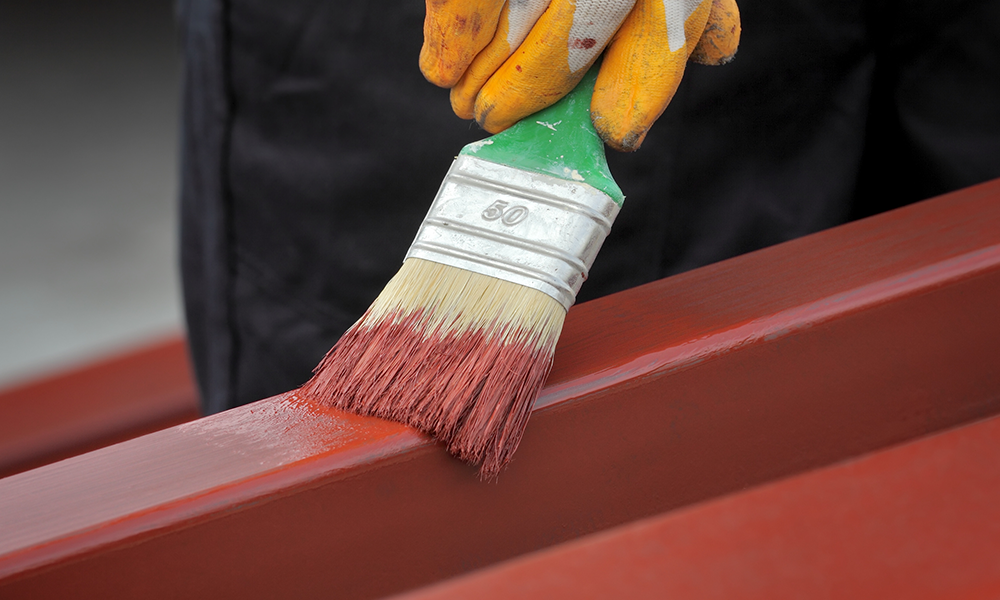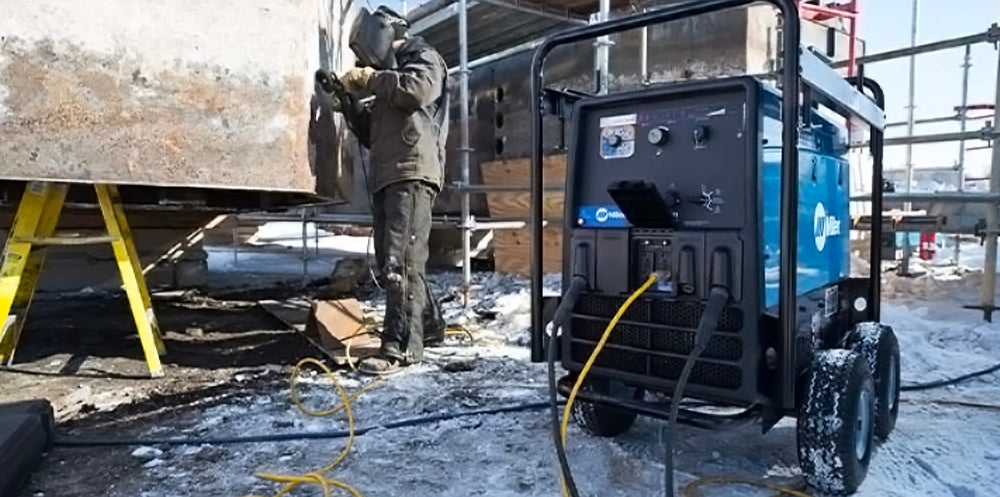There’s nothing wrong with a beginner learning how to weld. But no one wants to be making amateur mistakes, especially if you’ve been welding for a while. Here’s a list of the top 5 mistakes that’ll make you look like it’s your first day on the job and expert recommendations on how to avoid or fix these problems.
Welding in a T-Shirt
It doesn’t matter how amazing your welds might be, if you’re striking an arc in a t-shirt, you’re going to catch some flack. Here’s the thing: We’ve all done it. It’s a warm day, the last thing you want is a long sleeve shirt. For some of us, the consequences are immediate: 2nd degree sunburns wherever your skin was exposed.

However, depending on the biological makeup of your skin and your welding set up, some welders might not get burned after welding in a t-shirt. Here’s the thing—It’s going to catch up to you. Whether you’re trying a new process or you had to crank up the amps more than usual, at some point you’re going to get burned.
And that’s only considering the UV rays from the arc, not even factoring in the hot slag and potential burns you’re risking. A real welder knows being smart is about being safe. You play with arc-induced fire, you’re eventually going to get burned.
Understanding the difference between fire-resistant and fire-retardant clothing can be a good start in helping you understand which type of gear you prefer. Check out our in-depth article on it here. Welding Supplies from IOC has extremely reliable FR clothing from the best brands in the industry at unbeatable prices. See for yourself here.
Leaving Out Your Electrodes
Stick welding has one of the easiest setups. You just need the machine, some electrodes, and you’re in business. Because the electrodes contain filler material and shielding gas together, you don’t have to worry about gas cylinders, hoses, wire, etc. However, electrodes will begin deteriorating when exposed to the atmosphere. If you notice your welds begin to crack or show unexplained signs of porosity, there’s a good chance it's your rods.

While the atmosphere, in general, has an effect on your electrodes, the biggest issue is generally moisture. Unless you’re buying the really cheap stuff, your electrodes will be sealed in a bag by the manufacturer. Left unopened, they’ll last for a good while. But the moment you unseal that case, the clock is ticking on how long those rods have. How long you actually have depends on a variety of factors such as the type of electrode, how much humidity and how exposed it is to other particles like smoke and dust.
It’s important to note that even when unopened in their packaging, electrodes won’t last forever. The only exception is ESAB's VacPac rods. These electrodes are stored in hermetically sealed packaging that gives them “unlimited shelf life” as long as they’re not damaged or opened.
A lot of welders will try to time when they open a new package of electrodes. It’s good advice, but difficult and very inconvenient. Most experienced stick welders will use what is called a rod oven. Storing electrodes in a rod oven is the best way to prolong their usefulness and ensure you’re getting quality welds.
Guessing at Settings
Everyone struggles with settings. It’s generally the #1 issue for welders of any experience level. However, there are so many useful tools out there to help you these days, there’s no reason to blindly guess at your amps, wirespeed, etc.
The first helpful tool is always your manual. In this, you’ll find a reference table where you can line up your material thickness and other factors to get a really good baseline for your settings. A lot of machines will also have a reference guide printed somewhere on their case.

A welding machine with auto-set technology basically has a reference guide built right into its onboard systems. Instead of using the table, all you have to do is input a few factors (like material thickness) and it’ll do the rest for you. This is why so many welders see such a drastic improvement when they first start using an auto-set machine. It often turns out that they had been previously welding with sub-optimal settings all along.
Another option is using a “Weld Settings Calculator” app on your smartphone. Miller and Hobart both have excellent options that’ll give you solid baselines when choosing your settings. Of course, a little bit of fine tuning will often be required to give you the best results, but these apps’ recommendations will take the vast majority of guesswork out of the issue.
Warpage
A lot of welders will meticulously measure their pieces to be the perfect length. But after welding, the pieces are suddenly too short! Especially for those of us who were told that “measure twice” would solve a lot of our problems, this issue can be incredibly frustrating.

What’s actually happening is that the material is warping as they weld, causing the piece's length to shrink. The issue gets worse and worse as you try to work with thinner material and is one of the main reasons why so many welders struggle with sheet metal.
While we have an in-depth article going into the specific details of warpage (which you can read here), warpage is mostly caused by heat. There are two major ways to deal with warpage: force your piece to keep its shape and manage your heat.
The first solution involves a lot of clamps. By forcing your piece to keep its shape while hot, you can drastically reduce the distortion caused. And when we say “a lot of clamps,” we mean a lot. For thinner materials, it’s not uncommon to have more clamps than base metal. Here are some of the best clamps designed specifically for welding.
The second solution is controlling your heat. This can be accomplished in a variety of ways such as using a backing metal like a heat sink, preheating your piece, only welding in one spot for a brief moment before allowing it to cool down, etc.
Overpaying for Your Equipment and Consumables
It all comes down to this: Actual, physical storefronts have all sorts of extra expenses. They have to rent the building, hire cashiers and janitors, etc. By only selling online, we’re able to take all those savings from not operating a storefront and pass them on to you.

It’s always a good idea to check Welding Supplies from IOC first when buying welding equipment and consumables. Even compared with Amazon, IOC often has the best price around. This is especially true when you join our loyalty program, which is literally free money. For more information, check out Welding Supplies from IOC today.





